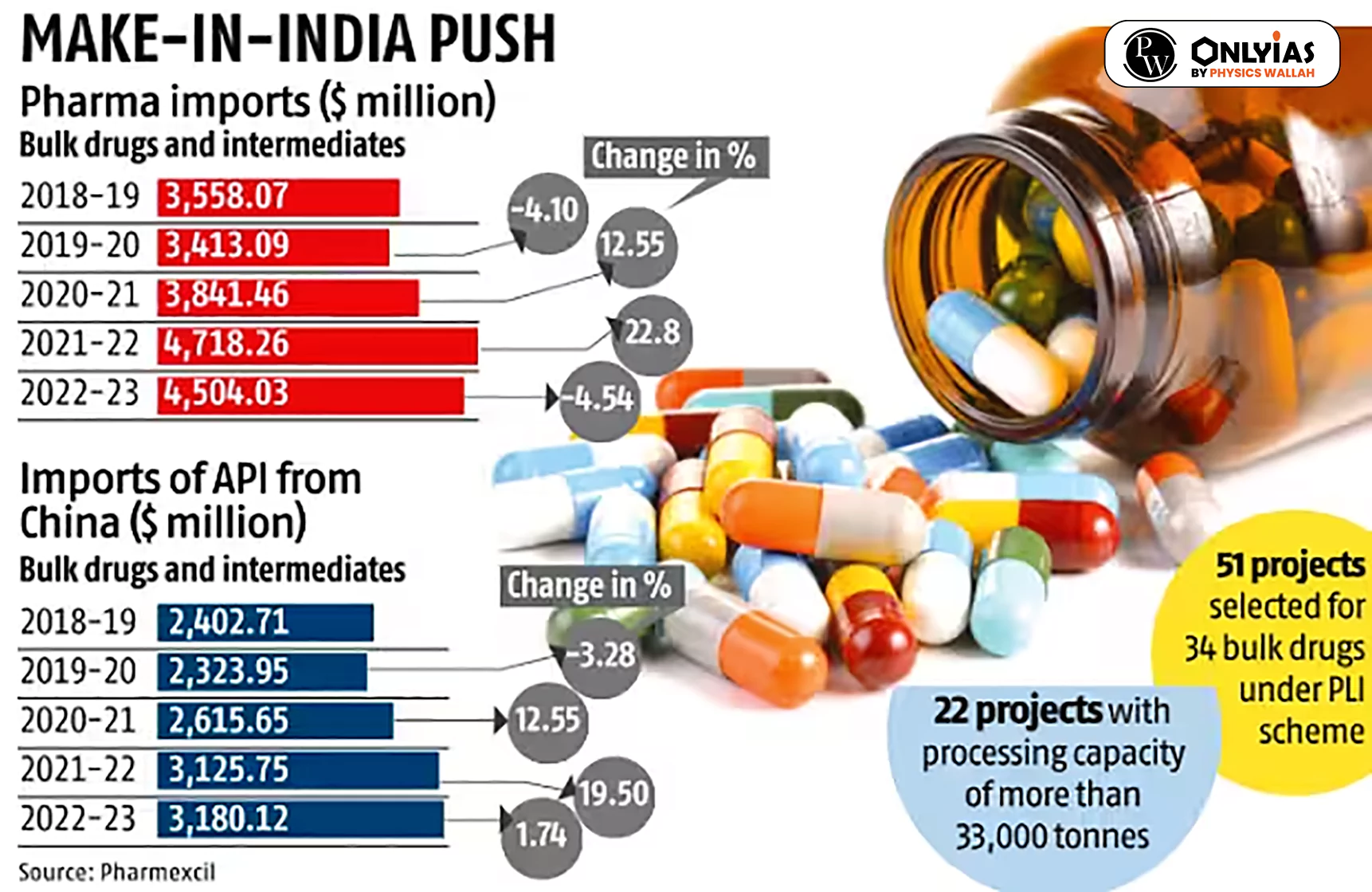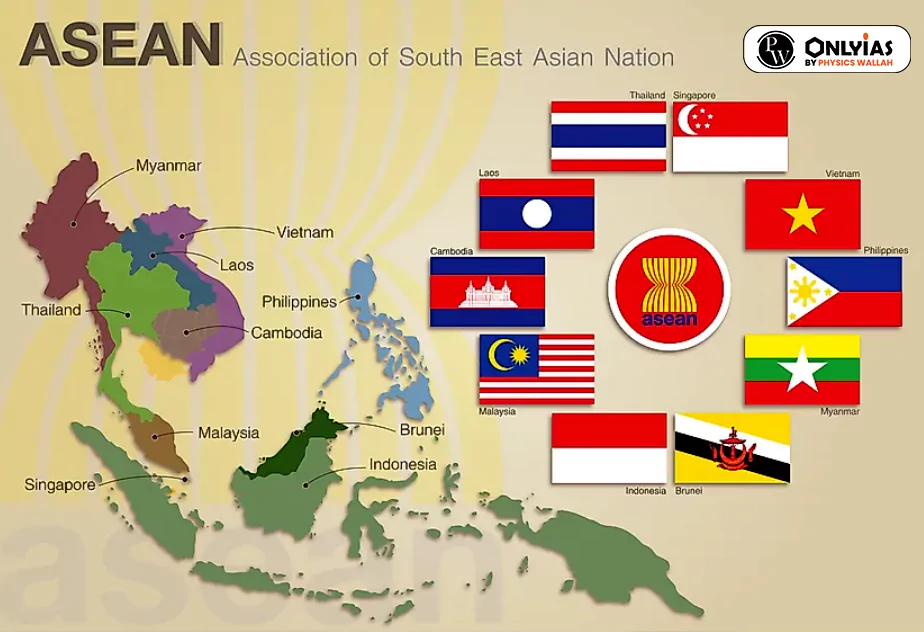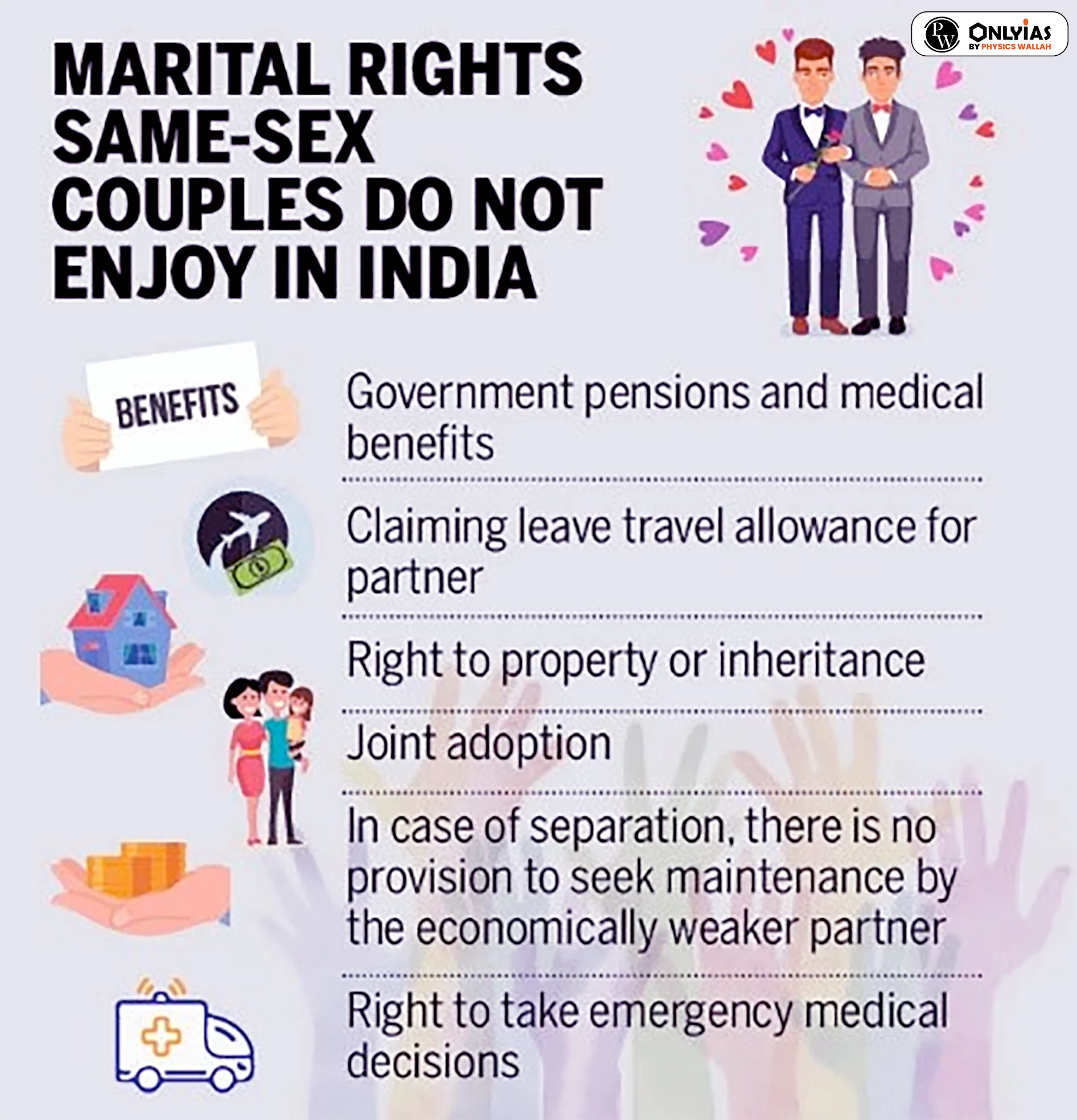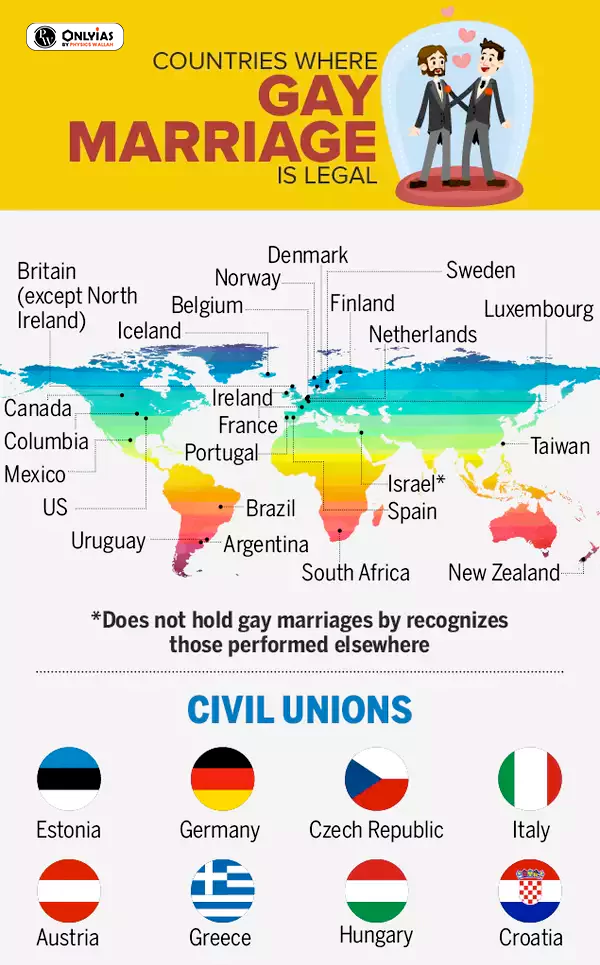
Source: Business Standards

|
ASEAN Trade in Goods by Trading Partners |
||
| Country | In 2020 (in million US$) | In 2021 (in million US$) |
| India | 65,711 | 91,552 |
| China | 518,617 | 669,200 |
News Source: Mint
| Prelims Question (2015)
The ‘Fortaleza Declaration’, recently in the news, is related to the affairs of (a) ASEAN (b) BRICS (c) OECD (d) WTO Ans: (b) |
|---|

News Source: PIB
| Prelims Question (2021)
Consider the following statements: 1. Adenoviruses have singlestranded DNA genomes whereas retroviruses have double-stranded DNA genomes. 2. Common cold is sometimes caused by an adenovirus whereas AIDS is caused by a retrovirus. Which of the statements given above is/are correct? (a) 1 only (b) 2 only (c) Both 1 and 2 (d) Neither 1 nor 2 Ans: (b) |
|---|
| Central Bank Digital Currency (CBDC) | Unified Payments Interface (UPI) |
| It is digital currency. | It is a payment system. |
| It is an accepted legal tender. | It is one of the modes of payment. |
| It involves direct movement of money between two individuals or entities. | The movement is only between two banks. |
| Example: e-rupee, e-krona of Sweden etc. | Examples: BHIM, PhonePe, Paytm etc. |
Key Terms
|
|---|
News Source: Mint
| Prelims Question (2016)
With reference to ‘Bitcoins’, sometimes seen in the news, which of the following statements is/are correct? 1. Bitcoins are tracked by the Central Banks of the countries. 2. Anyone with a Bitcoin address can send and receive Bitcoins from anyone else with a Bitcoin address. 3. Online payments can be sent without either side knowing the identity of the other. Select the correct answer using the code given below. (a) 1 and 2 only (b) 2 and 3 only (c) 3 only (d) 1, 2 and 3 Ans: (b) |
|---|
News Source: Mint
| Prelims Question (2016)
Consider the following statements: The Mangalyaan launched by ISRO 1. Is also called the Mars Orbiter Mission 2. Made India the second country to have a spacecraft orbit the Mars after USA 3. Made India the only country to be successful in making its spacecraft orbit the Mars in its very first attempt. Which of the statements given above is/are correct? (a) 1 only (b) 2 and 3 only (c) 1 and 3 only (d) 1, 2 and 3 Ans: (c) |
|---|
| Relevancy for Prelims: Indian Maritime Sector, Blue Economy, Global Maritime India Summit 2023, Amrit Kaal Vision 2047, Sagarmala Programme, and Exclusive Economic Zone (EEZ).
Relevancy for Mains: Maritime Sector, Global Maritime India Summit 2023; Key deliberations, Blue Economy, |
|---|
Key Deliberations of Global Maritime India Summit (GMIS) 2023
|
|---|
Also read: Ocean Resources and its potential
Amrit Kaal Vision 2047; Vision Document
|
|---|
Which initiatives has recently been launched with the objective of revamping the Indian maritime sector?
|
|---|
| Prelims Question (2021)
Consider the following statements: 1. The Global Ocean Commission grants licences for seabed exploration and mining in international waters. 2. India has received licences for seabed mineral exploration in international waters. 3. ‘Rare earth minerals’ are present on seafloor in international waters. Which of the statements given above are correct? (a) 1 and 2 only (b) 2 and 3 only (c) 1 and 3 only (d) 1, 2 and 3 Ans: (b) |
|---|
| Relevancy for Prelims: Same Sex Marriage in India, Supreme Court, Special Marriage Act, Central Adoption Resource Authority (CARA), and LGBTQ+.
Relevancy for Mains: Supreme Court Verdict on Same Sex Marriage in India, LGBTQ+ rights, and Government’s stand on same sex marriage in India. |
|---|

| Key Questions | Petitioners’ Argument | Minority View of SC | Majority View of SC |
| Fundamental Right to Marry |
|
Marriage may not be fundamental in itself, but it gains significance through state regulation. | Marriage’s fundamental importance lies in personal preference and social status. It being important doesn’t automatically make it an enforceable fundamental right. |
| Interpretation of Special Marriage Act (SMA) 1954.
SMA, 1954: It is an Act of the Parliament of India with provision for civil marriage for people of India and all Indian nationals in foreign countries, irrespective of religion |
|
Interpreting the SMA in a gender neutral way would amount to “judicial lawmaking”, which would violate the doctrine of separation of powers. | SMA’s objective is not to include same-sex couples, hence, it cannot be interpreted to do so. |
| Queer Couples’ Right to Adopt.
Central Adoption Resource Authority (CARA):
|
|
Struck down certain CARA regulations on the grounds that the legislation’s object is not to preclude unmarried couples from adopting a child. | Agreed with the discriminatory aspect but stated legislative change is needed; Judicial change could have deleterious impacts. Parliament’s choice stems from other laws where protections and entitlements flow from the institution of marriage. |
| Civil Unions for Queer Couples.
Civil Union: It refers to the legal status allowing same-sex couples specific rights and responsibilities normally conferred upon married couples. |
|
Recognized the right to form intimate associations within the fundamental right to freedom of speech and expression. Proposed setting up a committee to define rights available to queer couples in unions. | Disagreed with prescribing a choice of civil unions. Advocated for the state to facilitate the choice for those who wish to exercise it. |
Also read: Marriage Registration Rules
LGBTQ+ rights developments in India
Legality of Same Sex Marriage
|
|---|
Also read: Why Restrict Single Women from Surrogacy: Delhi HC to Centre
What is the government’s stand on same sex marriage in India?
|
|---|

Way Forward
The Supreme Court’s recent unanimous verdict against legalizing same sex marriage in India underscores the ongoing struggle for LGBTQ+ rights, prompting a critical examination of fundamental rights, legislative enactments, and societal perspectives surrounding same sex marriage in the country.
| Prelims Question (2019)
Which Article of the Constitution of India safeguards one’s right to marry the person of one’s choice? (a) Article 19 (b) Article 21 (c) Article 25 (d) Article 29 Ans: (b) |
|---|
| Mains Question (2021): Though the Human Rights Commissions have contributed immensely to the protection of human rights in India, yet they have failed to assert themselves against the mighty and powerful. Analysing their structural and practical limitations, suggest remedial measures. |
|---|
SC Verdict on Newsclick Shows Adherence to Due Pro...
Stay Invested: On Chabahar and India-Iran Relation...
Credit Rating Agencies, Impact on India’s De...
Catapulting Indian Biopharma Industry
Globalisation Under Threat, US Import Tariffs Have...
Global Report on Hypertension, Global Insights and...
<div class="new-fform">
</div>
